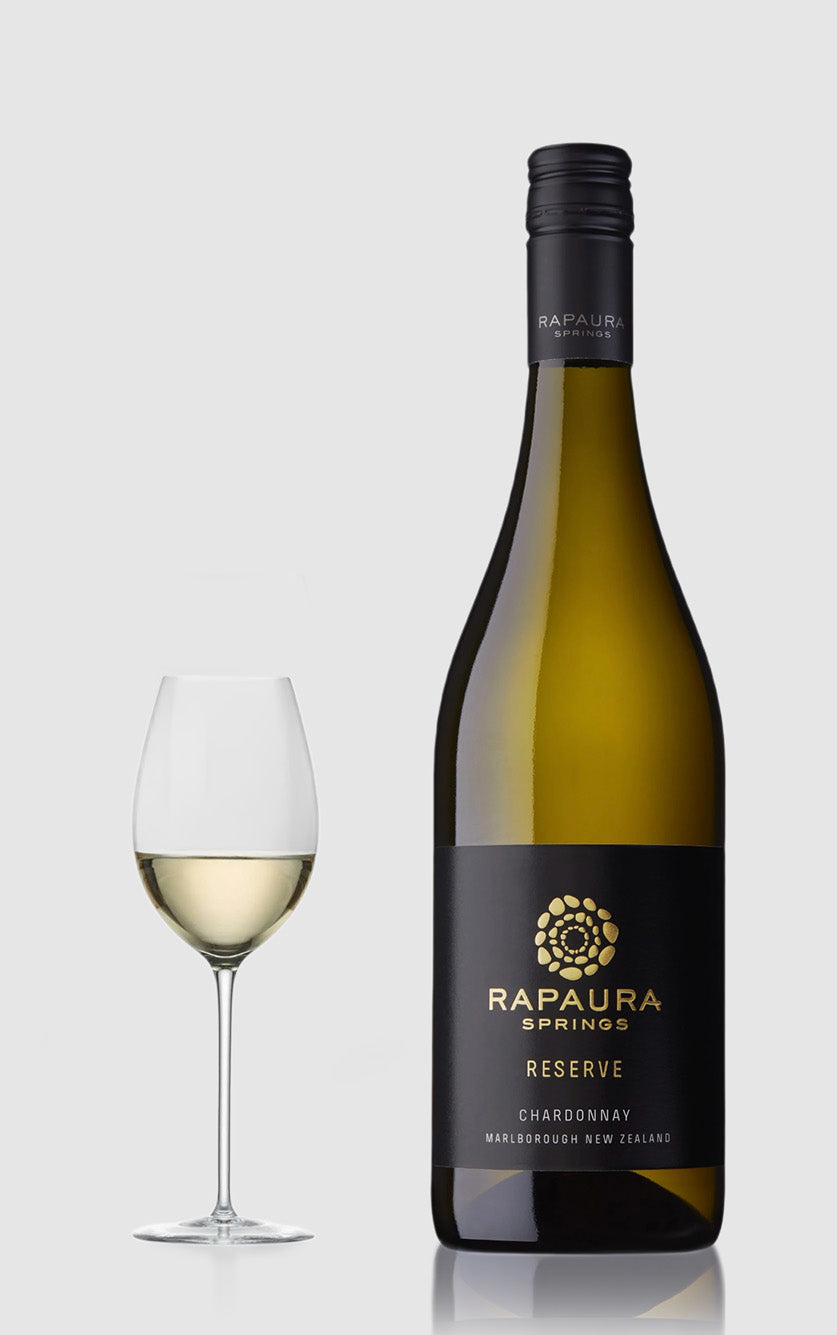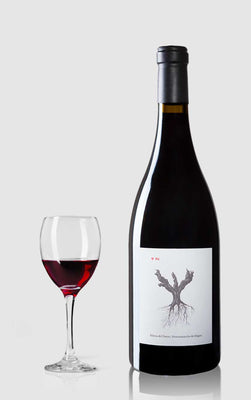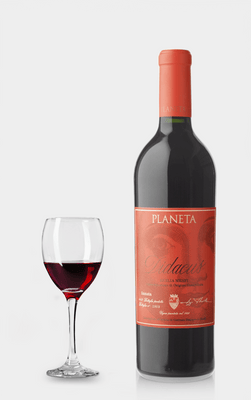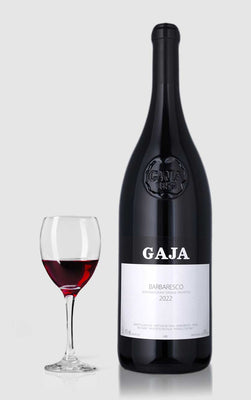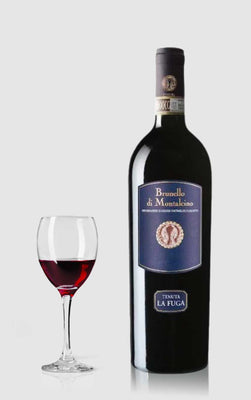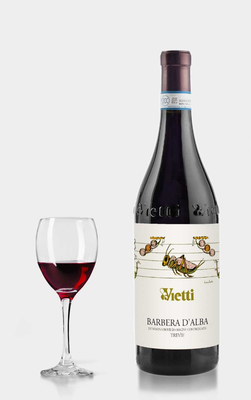Andre kategorier du måske vil kunne lide
Brunello
-
 ★ 97 – Robert Parker★ 95 – James Suckling★ 94 – Wine Enthusiast★ 94 – Decanter★ 94 – DH Wines★ 4.5 – Vivino
★ 97 – Robert Parker★ 95 – James Suckling★ 94 – Wine Enthusiast★ 94 – Decanter★ 94 – DH Wines★ 4.5 – VivinoAngelo GAJA Brunello di Montalcino 2018 “Pieve Santa Restituta”
Vendor:GajaRegular price 895,00 DKKRegular priceUnit price / per -
 ★ 96 – Wine Enthusiast★ 94 – DH Wines★ 4.1 – Vivino
★ 96 – Wine Enthusiast★ 94 – DH Wines★ 4.1 – VivinoTenuta Il Poggione Brunello di Montalcino 2018
Vendor:Tenuta Il Poggione-12% rabatRegular price 349,00 DKKRegular priceUnit price / per399,00 DKKSale price 349,00 DKKSale -
 ★ 96 – Wine Enthusiast★ 94 – DH Wines★ 93 – Robert Parker★ 93 – James Suckling★ 93 – Decanter★ 4.1 – Vivino
★ 96 – Wine Enthusiast★ 94 – DH Wines★ 93 – Robert Parker★ 93 – James Suckling★ 93 – Decanter★ 4.1 – VivinoTenuta Il Poggione Brunello di Montalcino 2017
Vendor:Tenuta Il PoggioneRegular price 299,00 DKKRegular priceUnit price / per369,00 DKKSale price 299,00 DKKSold out -
 ★ 98 – DH Wines★ 4.7 – Vivino
★ 98 – DH Wines★ 4.7 – VivinoGiodo Brunello di Montalcino 2016
Vendor:GiodoRegular price 1.995,00 DKKRegular priceUnit price / per -
 ★ 96 – Wine Enthusiast★ 95 – Decanter★ 94 – DH Wines★ 93 – Robert Parker★ 92 – James Suckling★ 4.3 – Vivino
★ 96 – Wine Enthusiast★ 95 – Decanter★ 94 – DH Wines★ 93 – Robert Parker★ 92 – James Suckling★ 4.3 – VivinoCaparzo Brunello Di Montalcino Docg 2016
Vendor:CaparzoRegular price 399,00 DKKRegular priceUnit price / per -
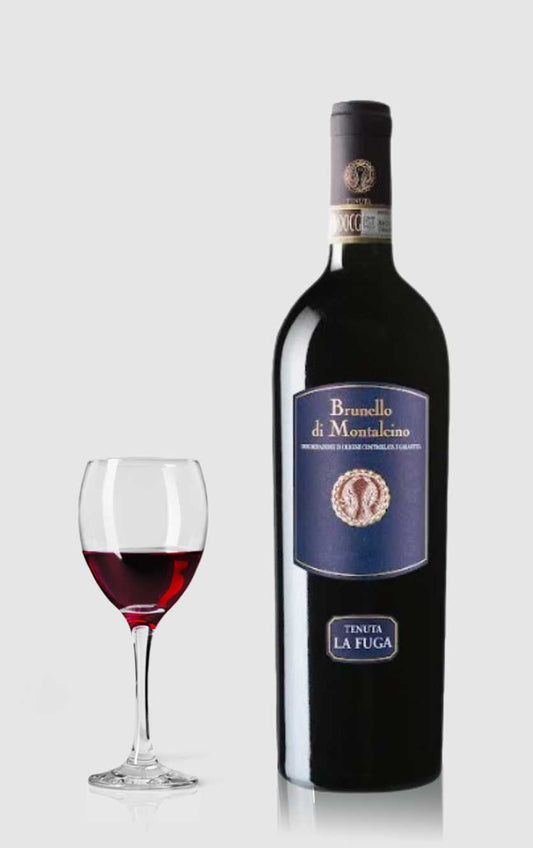 ★ 94 – DH Wines★ 4.2 – Vivino
★ 94 – DH Wines★ 4.2 – VivinoFolonari – La Fuga Brunello di Montalcino 2019
Vendor:FolonariRegular price 449,00 DKKRegular priceUnit price / per0,00 DKKSale price 449,00 DKK -
 ★ 95 – DH Wines★ 4.6 – Vivino
★ 95 – DH Wines★ 4.6 – VivinoAngelo GAJA Brunello di Montalcino 2019 “Pieve Santa Restituta”
Vendor:GajaRegular price 899,00 DKKRegular priceUnit price / per -
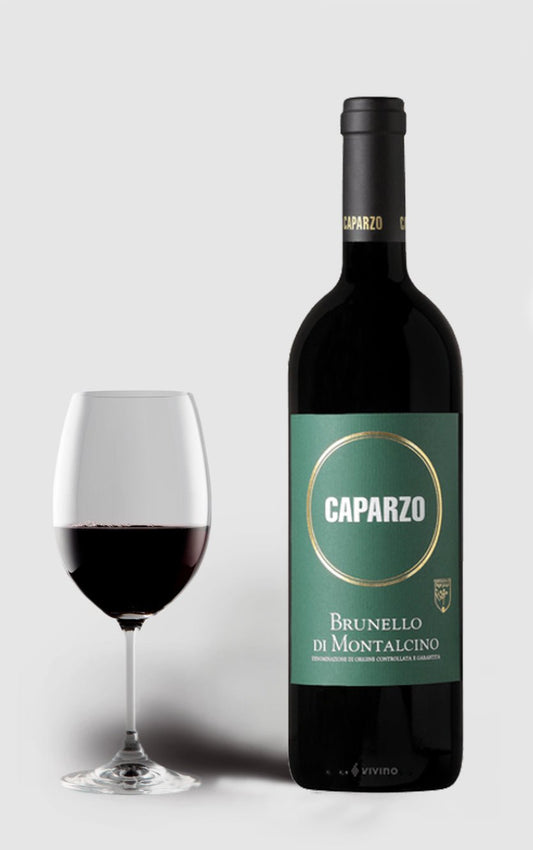 ★ 93 – Robert Parker★ 92 – James Suckling★ 92 – Decanter★ 92 – DH Wines★ 90 – Wine Enthusiast★ 4.0 – Vivino
★ 93 – Robert Parker★ 92 – James Suckling★ 92 – Decanter★ 92 – DH Wines★ 90 – Wine Enthusiast★ 4.0 – VivinoCaparzo Brunello Di Montalcino Docg 2017
Vendor:CaparzoRegular price 349,00 DKKRegular priceUnit price / per0,00 DKKSale price 349,00 DKK -
 ★ 97 – Robert Parker★ 95 – James Suckling★ 94 – Wine Enthusiast★ 94 – Decanter★ 94 – DH Wines★ 4.4 – Vivino
★ 97 – Robert Parker★ 95 – James Suckling★ 94 – Wine Enthusiast★ 94 – Decanter★ 94 – DH Wines★ 4.4 – VivinoAngelo GAJA Brunello di Montalcino 2020 “Pieve Santa Restituta”
Vendor:GajaRegular price 895,00 DKKRegular priceUnit price / per0,00 DKKSale price 895,00 DKK -
 ★ 94 – Wine Enthusiast★ 94 – DH Wines★ 93 – James Suckling★ 4.5 – Vivino
★ 94 – Wine Enthusiast★ 94 – DH Wines★ 93 – James Suckling★ 4.5 – VivinoBrunello di Montalcino 2018, DOCG
Vendor:Tenuta Pian delle VigneRegular price 569,00 DKKRegular priceUnit price / per -
 ★ 100 – Robert Parker★ 99 – Wine Enthusiast★ 98 – DH Wines★ 97 – Decanter★ 4.5 – VivinoSold out
★ 100 – Robert Parker★ 99 – Wine Enthusiast★ 98 – DH Wines★ 97 – Decanter★ 4.5 – VivinoSold outGiodo Brunello di Montalcino 2015
Vendor:GiodoRegular price 1.495,00 DKKRegular priceUnit price / per1.995,00 DKKSale price 1.495,00 DKKSold out -
 ★ 91 – DH Wines
★ 91 – DH WinesFolonari – Vigne a Porrona Montecucco Sangiovesi 2020
Vendor:FolonariRegular price 169,00 DKKRegular priceUnit price / per0,00 DKKSale price 169,00 DKK -
 ★ 89 – DH Wines
★ 89 – DH WinesFolonari – Vigne a Porrona Morellino di Scansano 2021
Vendor:FolonariRegular price 150,00 DKKRegular priceUnit price / per0,00 DKKSale price 150,00 DKK -
 ★ 96 – DH Wines★ 95 – Robert Parker
★ 96 – DH Wines★ 95 – Robert ParkerPoggio di Sotto, Rosso di Montalcino 2020
Vendor:Poggio di SottoRegular price 699,00 DKKRegular priceUnit price / per0,00 DKKSale price 699,00 DKK -
 ★ 97 – Decanter★ 95 – Wine Enthusiast★ 95 – James Suckling★ 95 – DH Wines★ 93 – Robert Parker★ 4.6 – Vivino
★ 97 – Decanter★ 95 – Wine Enthusiast★ 95 – James Suckling★ 95 – DH Wines★ 93 – Robert Parker★ 4.6 – VivinoCaparzo 2016, LA CASA Brunello di Montalcino
Vendor:Caparzo-16% rabatRegular price 749,00 DKKRegular priceUnit price / per899,00 DKKSale price 749,00 DKKSale -
 ★ 98 – James Suckling★ 96 – DH Wines★ 95 – Robert Parker★ 94 – Wine Enthusiast★ 4.5 – Vivino
★ 98 – James Suckling★ 96 – DH Wines★ 95 – Robert Parker★ 94 – Wine Enthusiast★ 4.5 – VivinoCaparzo 2013, LA CASA Brunello di Montalcino
Vendor:Caparzo-16% rabatRegular price 749,00 DKKRegular priceUnit price / per899,00 DKKSale price 749,00 DKKSale -
 ★ 88 – DH Wines★ 3.7 – Vivino
★ 88 – DH Wines★ 3.7 – VivinoSammicheli Brunello di Montalcino DOCG 2019
Vendor:SammicheliRegular price 249,00 DKKRegular priceUnit price / per -
 ★ 96 – DH Wines
★ 96 – DH Wines2020 Brunello di Montalcino, DOCG
Vendor:GajaRegular price 549,00 DKKRegular priceUnit price / per0,00 DKKSale price 549,00 DKK -
 ★ 96 – James Suckling★ 96 – DH Wines★ 95 – Decanter
★ 96 – James Suckling★ 96 – DH Wines★ 95 – DecanterBrunello di Montalcino “Sugarille” DOCG 2018
Vendor:GajaRegular price 1.995,00 DKKRegular priceUnit price / per0,00 DKKSale price 1.995,00 DKK -
 ★ 94 – Wine Enthusiast★ 94 – DH Wines★ 93 – James Suckling★ 4.5 – Vivino
★ 94 – Wine Enthusiast★ 94 – DH Wines★ 93 – James Suckling★ 4.5 – VivinoEredi Fuligni Brunello di Montalcino 2017
Vendor:Eredi FuligniRegular price 699,00 DKKRegular priceUnit price / per -
 ★ 94 – Wine Enthusiast★ 94 – James Suckling★ 92 – Robert Parker★ 92 – DH Wines★ 90 – Decanter★ 4.2 – Vivino
★ 94 – Wine Enthusiast★ 94 – James Suckling★ 92 – Robert Parker★ 92 – DH Wines★ 90 – Decanter★ 4.2 – VivinoGiodo Brunello di Montalcino 2014
Vendor:GiodoRegular price 1.995,00 DKKRegular priceUnit price / per -
 ★ 97 – Robert Parker★ 95 – Wine Enthusiast★ 95 – James Suckling★ 95 – DH Wines★ 94 – Decanter★ 4.7 – Vivino
★ 97 – Robert Parker★ 95 – Wine Enthusiast★ 95 – James Suckling★ 95 – DH Wines★ 94 – Decanter★ 4.7 – VivinoGIODO Brunello di Montalcino 2017
Vendor:GiodoRegular price 1.495,00 DKKRegular priceUnit price / per -
 ★ 96 – DH Wines★ 4.3 – Vivino
★ 96 – DH Wines★ 4.3 – VivinoGIODO Brunello di Montalcino 2018
Vendor:GiodoRegular price 1.595,00 DKKRegular priceUnit price / per -
 ★ 97 – James Suckling★ 97 – DH Wines★ 96 – Robert Parker★ 94 – Decanter★ 4.7 – Vivino
★ 97 – James Suckling★ 97 – DH Wines★ 96 – Robert Parker★ 94 – Decanter★ 4.7 – VivinoGIODO Brunello di Montalcino 2019
Vendor:GiodoRegular price 1.495,00 DKKRegular priceUnit price / per -
 ★ 100 – Wine Enthusiast★ 98 – Robert Parker★ 97 – James Suckling★ 97 – Decanter★ 97 – DH Wines★ 4.6 – Vivino
★ 100 – Wine Enthusiast★ 98 – Robert Parker★ 97 – James Suckling★ 97 – Decanter★ 97 – DH Wines★ 4.6 – VivinoGiodo Brunello di Montalcino 2013
Vendor:GiodoRegular price 2.495,00 DKKRegular priceUnit price / per0,00 DKKSale price 2.495,00 DKK -
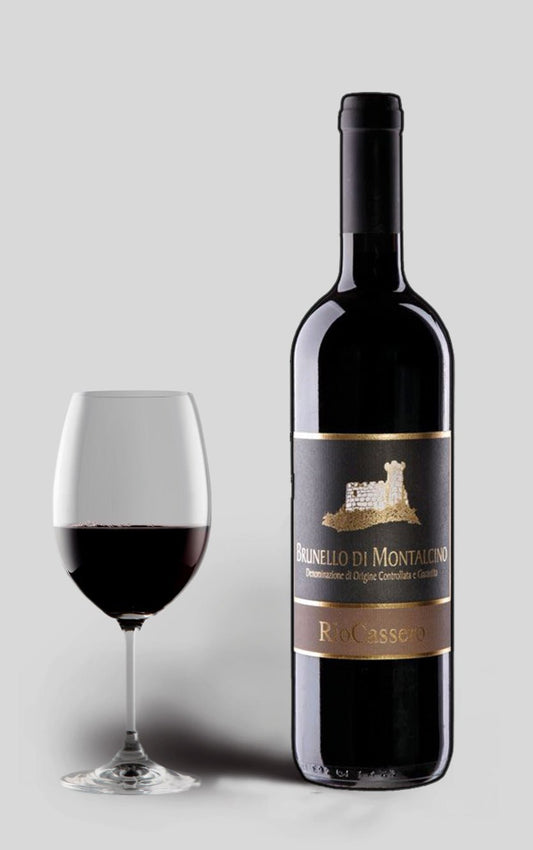 ★ 92 – DH Wines★ 4.2 – Vivino
★ 92 – DH Wines★ 4.2 – VivinoCaparzo Brunello di Montalcino 2017 “Rio Cassero”-Tuscany
Vendor:Caparzo-14% rabatRegular price 299,00 DKKRegular priceUnit price / per349,00 DKKSale price 299,00 DKKSale
Collection: Brunello
Brunello di Montalcino – Structure, complexity and longevity
Brunello di Montalcino is one of Italy's most prestigious red wines and is made exclusively from Sangiovese Grosso. The wine is known for its intense structure, acidity, tannins and ability to develop over decades. It is produced around the town of Montalcino in southern Tuscany and is classified as DOCG – the highest quality designation in Italian wine law.
Origin and grape variety
Brunello is produced in the hilly zone around Montalcino, where the warm, dry climate and altitudes (up to 500 m above sea level) provide perfect conditions for ripening and acid retention. The Sangiovese Grosso grape – a local clone of Sangiovese – produces fuller, more structured wines than those from Chianti or Montepulciano. No other grapes are allowed in Brunello – the wine must be 100% pure Sangiovese.
Vinification and aging
Brunello is subject to strict storage requirements:
- Brunello di Montalcino: Minimum 2 years in wooden barrels and 4 years in total before release (5 years for Riserva).
- Brunello Riserva: Released at the earliest after 6 years with a minimum of 2 years of barrel aging.
The wines are typically aged in Slavonian oak, but modern producers also use French barriques. The result is wines with depth, tertiary aromas and a firm, tannic structure that mature beautifully over 10–30 years depending on the style and vintage.
Rosso di Montalcino – Brunello's little brother
Rosso di Montalcino is made from the same grape and in the same area, but has a shorter aging period and more immediate fruit. It is a younger, lighter version, often expressing the Montalcino terroir in a more accessible form. Rosso is usually released 1 year after harvest and is typically drunk young, but can also be aged for 5–10 years if of good quality.
Frequently asked questions about Brunello
How long can Brunello be stored?
Brunello di Montalcino has a high aging potential – typically 10–30 years. Riserva versions and wines from large vintages can develop tertiary notes for several decades.
What does Brunello taste like?
Classic aromas include cherry, forest floor, leather, tobacco and dried herbs. The wine has high acidity, clear tannins and a long finish – often with aging-developed notes of mushrooms and spices.
What is the difference between Brunello and Chianti?
Both wines are made from Sangiovese, but Brunello is more concentrated, aged longer and produced from a specific clone in Montalcino. Chianti is typically lighter and may contain other grapes.
- Choosing a selection results in a full page refresh.
- Opens in a new window.
